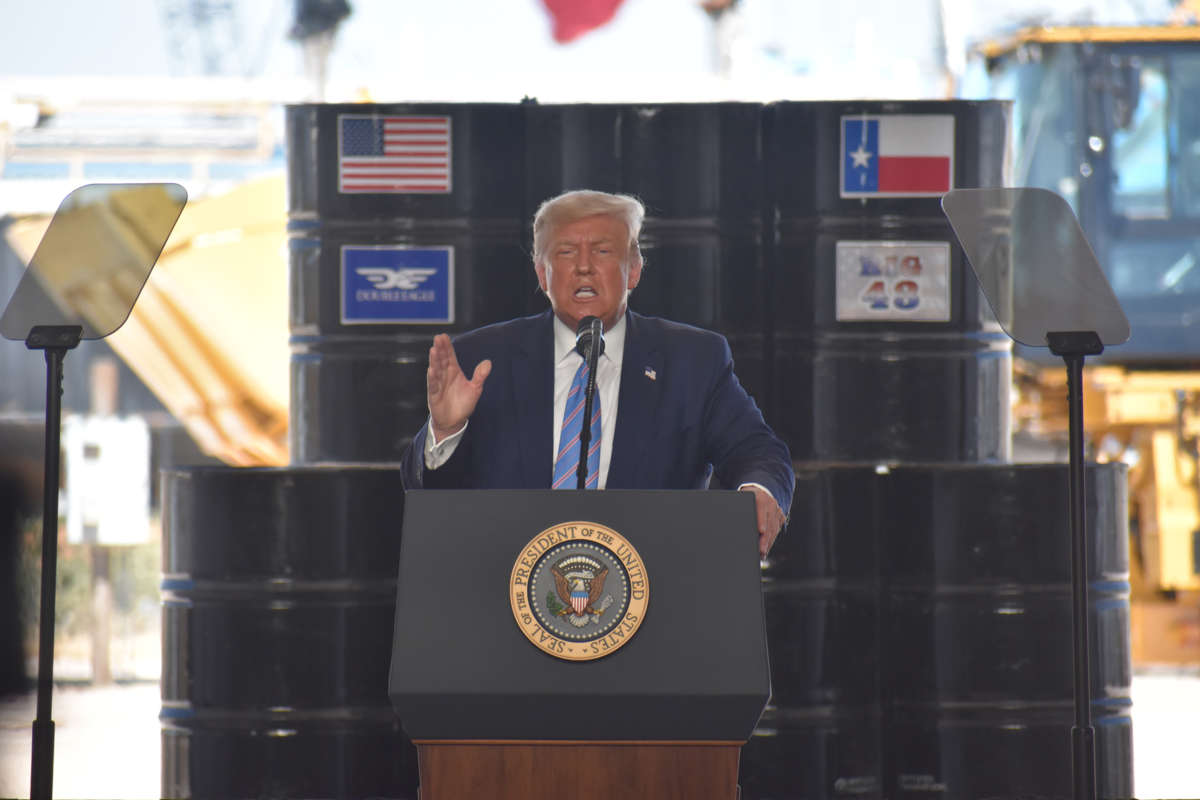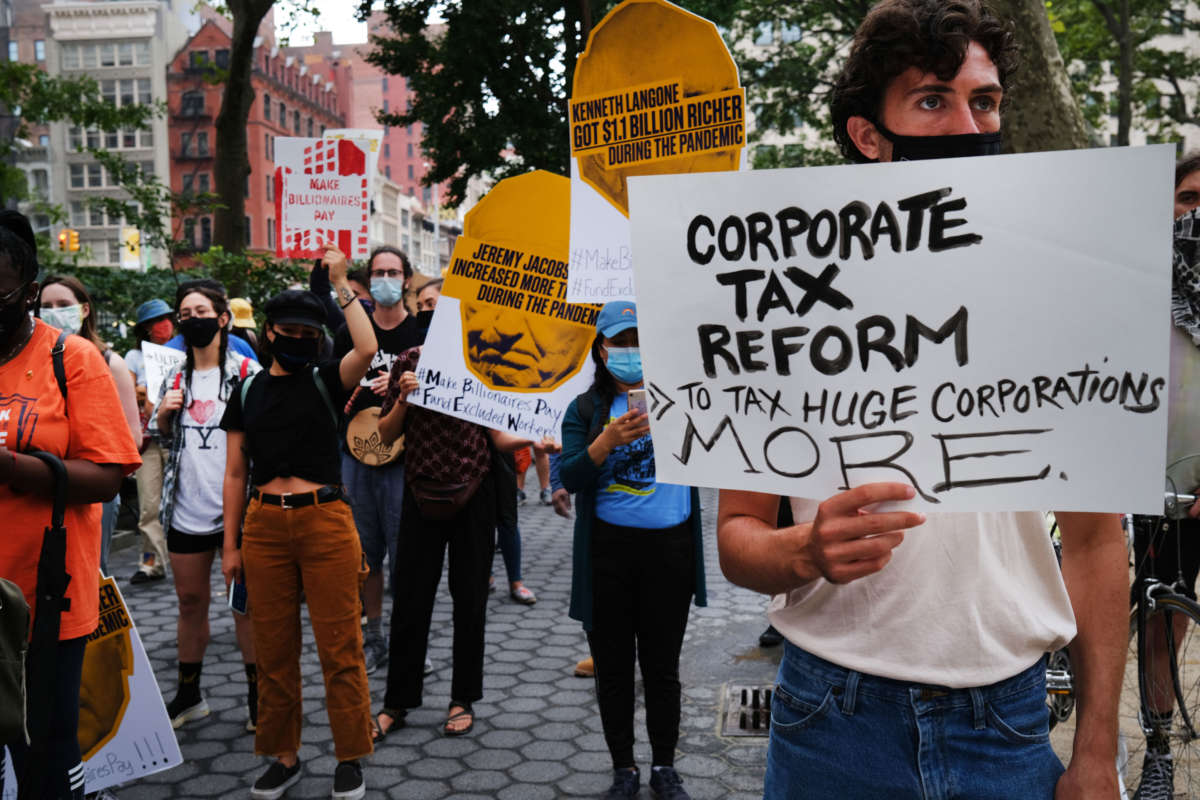WHY ARE THE ADVOCATES OF HOME SCHOOLING AND OPPOSE PUBLIC SCHOOLS WANT KIDS TO GO BACK TO SCHOOL, CLEARLY HOME SCHOOLING DOES NOT WORK WELL
BY Candice Bernd, Truthout PUBLISHED August 3, 2020
Working parents grappling with the difficult choices before them this school semester — keeping their children home to learn remotely, or risking COVID-19 transmission by sending them to class — are increasingly turning to a new trend being hailed as a “solution” to the pandemic: privatized “microschools.”
Microschools consist of small groups, or “pods,” of mixed-level students located in homes or local facilities like churches or community centers, who are guided through personalized pedagogies by parents or educators as an alternative to public education. The model blends a private school and homeschool approach, retaining flexibility of homeschooling while relying on paid teachers to facilitate a classroom experience.
Right-wing and libertarian proponents of privatization, including Charles Koch, the Walton Family Foundation, the Heritage Foundation, the Reason Foundation and Education Secretary Betsy DeVos, are exploiting the pandemic to push the model.
DeVos tweeted her support several times last week for the School Choice Now Act that would provide $5 billion in tax credits for families opting for homeschooling or private school. At the same time, DeVos and the Trump administration have threatened to withhold federal funds from any school that does not open its classrooms fully in the fall.
Microschools were already gaining interest over the last several years with companies like Prenda piloting the model in Arizona in 2018. Since its launch, Prenda has opened more than 200 “campuses” in the state, according to its CEO, Kelly Smith. The pandemic, however, has strengthened the appeal: Google searches for “microschool” have spiked since major districts began announcing plans to remain online for the fall.
Now, Silicon Valley is jumping on the bandwagon, with several new start-ups hoping to take advantage of what they see as a big market amid the COVID-19 crisis. New online platforms in Seattle and San Francisco are connecting families and educators looking to pool resources and form microschools.“We have no control over what these white people are saying to our children.”
But educators and union activists warn privatized microschools could exacerbate inequality as affluent parents leave public schools for the social and economic benefits of cocooning their children into pods. Predominantly Black and Brown families are likely to be left behind, widening an already dire racial gap in public education.
These educators are fighting back against the impossible choice driving many parents toward private microschools. The Demand Safe Schools Coalition, made up of progressive teachers unions and organizations, is mobilized Monday for increased government resources to ensure safe, equitable and science-based school reopenings for working families.
The Chicago Teachers Union, the United Teachers Los Angeles and National Educators United are among the coalition groups demanding more nurses and counselors, personal protective equipment, cleaning supplies and virus testing services. The coalition is also targeting DeVos’s privatization agenda, demanding a moratorium on new charter and voucher programs.
Meanwhile, teachers across the U.S. are set to revitalize the Red for Ed movement in a strike wave similar to 2018. Monday’s “Day of Resistance” comes as the American Federation of Teachers adopted a resolution last week authorizing last-resort “safety strikes” if school reopening plans fail to meet demands to ensure teachers’ and students’ health and safety amid the pandemic.“It’s white flight but for the schools.”
In Arizona, teachers mobilized Monday in the state’s capitol as part of a motor march “funeral procession” of educators delivering their own signed obituaries to Gov. Doug Ducey. Hundreds of teachers have held similar motor marches in cars painted with slogans like “Red for Ed, Not Dead for Ed,” over the last several weeks.
Governor Ducey announced last week that schools would wait for a green light from public health officials before reopening. His latest order requires schools to open in-person in some capacity starting August 17.
When it comes to privatizers’ proposed solution to the crisis though, Arizona educators say microschools are just another way to siphon public dollars into a charter model.
Mesa Rejects Microschool Pilot
Organizers with Save Our Schools Arizona and the Mesa Education Association successfully beat back a proposed microschool pilot for 100 K-8 students in Arizona’s Mesa Unified School District by flooding school board members with 76 public comments in opposition to the proposal ahead of a special board meeting on July 23.
The district proposed an emergency procurement of $440,000 to partner with Prenda on the program, which would have placed students with unlicensed “guides” teaching company curricula with a Mesa public school teacher overseeing as the “teacher of record.”
During the July 23 public meeting, Prenda CEO Smith told Mesa Public Schools board members that the company’s microschools are about 80 percent white, 8 percent Black and 8 percent Latinx, emphasizing that those figures include many poor rural students. He insisted that the pilot would be representative of demographics of the predominantly Latinx school district, but board members questioned the extent to which Prenda guides determine which students are selected.“So we’ll have a special meeting for children of color and families of color in this model. Absolutely not. I don’t like anything that’s been said.”
“Speaking as a person of color, this just reeks of just separating — ok, so we’ll have a special meeting for children of color and families of color … in this model. Absolutely not. I don’t like anything that’s been said,” said Mesa Governing Board Member Kiana Maria Sears during the meeting. She described the plan as chasing down students who were leaving the district for charters. “This is unconscionable, where we are right now.”
Later Smith cited his participation in a program led by 4.0 Schools, which trains “education entrepreneurs” and has helped launch dozens of start-ups and private schools in New Orleans. The lessons he learned in the program, he said, helped him design Prenda. Board Member Sears was again shocked, saying, “That’s an explosive point for someone who’s originally from New Orleans, who saw … the decline and the privatization of all of Orleans Parish,” where more than 93 percent of students now attend charter schools.
Smith declined to discuss how many other districts in the state are weighing potential partnerships or pilot programs with Prenda, telling Truthout that, “We like [that kind of partnership] a lot. We’re in talks with various people in multiple states about doing more of that as one of our goals to make this model accessible.” Partnerships with school districts, he says, are “the best way” for the company to ensure equity.
According to its website, Prenda is backed by 4.0 Schools, the Walton Family Foundation and the Mercatus Center at George Mason University, a right-wing think tank funded by Charles Koch, who serves on the organization’s board of directors. Koch also funds 4.0 Schools. In 2018, the Walton Family Foundation gave $325,000 to Prenda, according to the Foundation’s publicly listed grantees.
Moreover, Prenda microschools are partly funded through the state’s voucher-style Empowerment Scholarship Account (ESA) program. The company also partners with several charter schools, through which state funding flows to its campuses. In June 2020, Prenda raised $6,149,990 in new equity, according to a news site that tracks venture capital.
Other privatization groups backed by the Kochs and the Waltons, such as Yes. Every Kid. and the American Federation for Children, are already promoting similar voucher programs for microschools as an innovative solution for families in crisis.
“My goal is not to engage in a political struggle,” Smith said when asked about company’s backers. “My goal is to empower kids as learners, and we’re excited to work together with anyone who wants to work with us.” His company’s goal, he says, “is not to replace, it’s not to destroy; it’s to augment and add and innovate together.”
Christina Bustos, an executive board member with the Mesa Education Association, doesn’t see it that way. She told Truthout that Prenda’s failed partnership with Mesa Public Schools was in part due to the company’s desire to extract funds from the district after the May 15 extended deadline for ESA applications. She also argued that new legislation is needed to regulate microschools.
Prenda’s microschools use tax dollars to place children as young as 5 in a private home or facility with an unlicensed and untrained independent contractor. To make matters worse, there is no law in the state regulating this kind of corporate operation. Smith, similarly, has no background in education.“I’m far more confident that there’s checks and balances in public schools.”
Bustos is not just concerned about safety; she’s also worried about the cultural competency of Prenda’s untrained guides. “They have these Black and Brown kids coming into these white people’s homes, and we have no control over what these white people are saying to our children, or how they’re teaching them to think critically or question or not question authority,” Bustos says. “I’m far more confident that there’s checks and balances in public schools.”
That’s if Mesa’s Black and Brown kids are included at all. Teachers and Mesa school board members questioned the model’s ability to include low-income families who live in apartments or those who can’t access broadband internet. The problem is amplified by the fact that communities of color are the ones that have been hardest hit by COVID-19. “It’s white flight but for the schools,” Bustos says.
Research on charters has long confirmed that self-selection ultimately becomes self-segregation, and widens existing gaps in achievement and school funding. Bustos says it’s all part and parcel of DeVos’s plan to dismantle public education by depriving schools of federal support amid a national crisis.
The GOP’s new coronavirus relief package includes $105 billion for education, but two-thirds of the funding is tied to schools reopening for in-person instruction. DeVos outlined the privatization plan on “Fox News Sunday” saying, “American investment in education is a promise to students and their families. If schools aren’t going to reopen and not fulfill that promise, they shouldn’t get the funds. Then give it to the families to decide to go to a school that is going to meet that promise.”
Just as privatization proponents exploited Hurricane Katrina to decimate the public school system in New Orleans, DeVos is now exploiting the pandemic to redirect federal relief funds intended for public schools into vouchers for private schools. If the current trend continues, more and more of those federal relief dollars are likely to be funneled into corporate microschools.
“This community was trying to create some kind of a solution to a problem that they think that they have: that people are going to pull their kids out of the school because they want them homeschooled,” Bustos told Truthout. “In my mind, part of the reason they’re having this problem is because Betsy DeVos is pushing this model.”“Part of the reason they’re having this problem is because Betsy DeVos is pushing this model.”
Mesa school board members ultimately agreed that it would be better to replicate a public version of the microschool model, using district teachers and resources instead of outsourcing to a private company. Until a vaccine for COVID-19 is fully developed and distributed, public school districts are finding real merits in the model. Bustos supports the effort, which is already underway.
“We as teachers have been begging for school districts to allow us more freedom to teach children in ways that are more meaningful, bring more joy, inspiration and natural curiosity to our schools,” Bustos submitted to the Mesa school board on July 23. “If you divided up the money [originally allocated for Prenda] with a small cohort of teachers, we would be overjoyed to teach a small group of students in a very similar way.”
Beyond Arizona, Microschools Multiply
Despite the company’s defeat in Mesa, Smith’s microschool model is spreading rapidly across the state and across the U.S. Prenda is building fast-growing Facebook communities for both guides and parents to share tips and resources.
But Arizona isn’t the only state in which parents and educators are scrambling over Facebook to organize themselves into microschools and more informal pods for child care and education. Throughout the nation, parents are increasingly pooling their time and sharing the costs of nannies and tutors. Others are volunteering their living rooms as contemporary one-room schoolhouses.
Tech start-ups are taking advantage, using the forums to advertise and hone their services. School districts are also turning to such online platforms, hoping to formalize the creation of microschools in their own communities.“If all the money going into monetizing microschools would be going toward helping public schools have enough resources to reopen safely, we could solve this crisis.”
A new public-private partnership may already be in the works in Seattle, where Bloomberg reported that the CEO of one such startup, Weekdays, said she has been in contact with administrators at Seattle Public Schools. Last week, San Francisco officials announced plans to open 40 “learning hubs” of low-income students to assist their remote learning needs.
Susan Solomon, president of United Educators of San Francisco, tells Truthout the district hasn’t yet involved the union in its communications regarding the new plan for hubs, but the union is also struggling with the creation of pandemic pods among wealthier families in the Bay Area.
“All of this is taking advantage of a pandemic to do what certain people like Betsy DeVos have wanted to do all along, and that is starve public education to death,” Solomon says. “If all the money and effort that’s going into monetizing microschools and starting private pods would be going toward … helping public schools have enough resources to reopen safely, we could solve this crisis.”
Candice Bernd is senior editor/staff reporter at Truthout. Her work has also appeared in several other publications, including The Nation, In These Times, the Texas Observer, Salon, Rewire.News, Sludge, YES! Magazine and Earth Island Journal. Her work has received awards from the San Francisco Press Club, the Fort Worth chapter of Society of Professional Journalists, the Native American Journalists Association, and the Dallas Peace and Justice Center. Follow her on Twitter: @CandiceBernd.

A teacher with Arizona Educators United writes protest slogans on the windows of a car in advance of a "motor march" demonstration demanding a safe reopening in Mesa, Arizona, on July 15, 2020.
REBECCA GARELLI/ARIZONA EDUCATORS UNITED
BY Candice Bernd, Truthout PUBLISHED August 3, 2020
Working parents grappling with the difficult choices before them this school semester — keeping their children home to learn remotely, or risking COVID-19 transmission by sending them to class — are increasingly turning to a new trend being hailed as a “solution” to the pandemic: privatized “microschools.”
Microschools consist of small groups, or “pods,” of mixed-level students located in homes or local facilities like churches or community centers, who are guided through personalized pedagogies by parents or educators as an alternative to public education. The model blends a private school and homeschool approach, retaining flexibility of homeschooling while relying on paid teachers to facilitate a classroom experience.
Right-wing and libertarian proponents of privatization, including Charles Koch, the Walton Family Foundation, the Heritage Foundation, the Reason Foundation and Education Secretary Betsy DeVos, are exploiting the pandemic to push the model.
DeVos tweeted her support several times last week for the School Choice Now Act that would provide $5 billion in tax credits for families opting for homeschooling or private school. At the same time, DeVos and the Trump administration have threatened to withhold federal funds from any school that does not open its classrooms fully in the fall.
Microschools were already gaining interest over the last several years with companies like Prenda piloting the model in Arizona in 2018. Since its launch, Prenda has opened more than 200 “campuses” in the state, according to its CEO, Kelly Smith. The pandemic, however, has strengthened the appeal: Google searches for “microschool” have spiked since major districts began announcing plans to remain online for the fall.
Now, Silicon Valley is jumping on the bandwagon, with several new start-ups hoping to take advantage of what they see as a big market amid the COVID-19 crisis. New online platforms in Seattle and San Francisco are connecting families and educators looking to pool resources and form microschools.“We have no control over what these white people are saying to our children.”
But educators and union activists warn privatized microschools could exacerbate inequality as affluent parents leave public schools for the social and economic benefits of cocooning their children into pods. Predominantly Black and Brown families are likely to be left behind, widening an already dire racial gap in public education.
These educators are fighting back against the impossible choice driving many parents toward private microschools. The Demand Safe Schools Coalition, made up of progressive teachers unions and organizations, is mobilized Monday for increased government resources to ensure safe, equitable and science-based school reopenings for working families.
The Chicago Teachers Union, the United Teachers Los Angeles and National Educators United are among the coalition groups demanding more nurses and counselors, personal protective equipment, cleaning supplies and virus testing services. The coalition is also targeting DeVos’s privatization agenda, demanding a moratorium on new charter and voucher programs.
Meanwhile, teachers across the U.S. are set to revitalize the Red for Ed movement in a strike wave similar to 2018. Monday’s “Day of Resistance” comes as the American Federation of Teachers adopted a resolution last week authorizing last-resort “safety strikes” if school reopening plans fail to meet demands to ensure teachers’ and students’ health and safety amid the pandemic.“It’s white flight but for the schools.”
In Arizona, teachers mobilized Monday in the state’s capitol as part of a motor march “funeral procession” of educators delivering their own signed obituaries to Gov. Doug Ducey. Hundreds of teachers have held similar motor marches in cars painted with slogans like “Red for Ed, Not Dead for Ed,” over the last several weeks.
Governor Ducey announced last week that schools would wait for a green light from public health officials before reopening. His latest order requires schools to open in-person in some capacity starting August 17.
When it comes to privatizers’ proposed solution to the crisis though, Arizona educators say microschools are just another way to siphon public dollars into a charter model.
Mesa Rejects Microschool Pilot
Organizers with Save Our Schools Arizona and the Mesa Education Association successfully beat back a proposed microschool pilot for 100 K-8 students in Arizona’s Mesa Unified School District by flooding school board members with 76 public comments in opposition to the proposal ahead of a special board meeting on July 23.
The district proposed an emergency procurement of $440,000 to partner with Prenda on the program, which would have placed students with unlicensed “guides” teaching company curricula with a Mesa public school teacher overseeing as the “teacher of record.”
During the July 23 public meeting, Prenda CEO Smith told Mesa Public Schools board members that the company’s microschools are about 80 percent white, 8 percent Black and 8 percent Latinx, emphasizing that those figures include many poor rural students. He insisted that the pilot would be representative of demographics of the predominantly Latinx school district, but board members questioned the extent to which Prenda guides determine which students are selected.“So we’ll have a special meeting for children of color and families of color in this model. Absolutely not. I don’t like anything that’s been said.”
“Speaking as a person of color, this just reeks of just separating — ok, so we’ll have a special meeting for children of color and families of color … in this model. Absolutely not. I don’t like anything that’s been said,” said Mesa Governing Board Member Kiana Maria Sears during the meeting. She described the plan as chasing down students who were leaving the district for charters. “This is unconscionable, where we are right now.”
Later Smith cited his participation in a program led by 4.0 Schools, which trains “education entrepreneurs” and has helped launch dozens of start-ups and private schools in New Orleans. The lessons he learned in the program, he said, helped him design Prenda. Board Member Sears was again shocked, saying, “That’s an explosive point for someone who’s originally from New Orleans, who saw … the decline and the privatization of all of Orleans Parish,” where more than 93 percent of students now attend charter schools.
Smith declined to discuss how many other districts in the state are weighing potential partnerships or pilot programs with Prenda, telling Truthout that, “We like [that kind of partnership] a lot. We’re in talks with various people in multiple states about doing more of that as one of our goals to make this model accessible.” Partnerships with school districts, he says, are “the best way” for the company to ensure equity.
According to its website, Prenda is backed by 4.0 Schools, the Walton Family Foundation and the Mercatus Center at George Mason University, a right-wing think tank funded by Charles Koch, who serves on the organization’s board of directors. Koch also funds 4.0 Schools. In 2018, the Walton Family Foundation gave $325,000 to Prenda, according to the Foundation’s publicly listed grantees.
Moreover, Prenda microschools are partly funded through the state’s voucher-style Empowerment Scholarship Account (ESA) program. The company also partners with several charter schools, through which state funding flows to its campuses. In June 2020, Prenda raised $6,149,990 in new equity, according to a news site that tracks venture capital.
Other privatization groups backed by the Kochs and the Waltons, such as Yes. Every Kid. and the American Federation for Children, are already promoting similar voucher programs for microschools as an innovative solution for families in crisis.
“My goal is not to engage in a political struggle,” Smith said when asked about company’s backers. “My goal is to empower kids as learners, and we’re excited to work together with anyone who wants to work with us.” His company’s goal, he says, “is not to replace, it’s not to destroy; it’s to augment and add and innovate together.”
Christina Bustos, an executive board member with the Mesa Education Association, doesn’t see it that way. She told Truthout that Prenda’s failed partnership with Mesa Public Schools was in part due to the company’s desire to extract funds from the district after the May 15 extended deadline for ESA applications. She also argued that new legislation is needed to regulate microschools.
Prenda’s microschools use tax dollars to place children as young as 5 in a private home or facility with an unlicensed and untrained independent contractor. To make matters worse, there is no law in the state regulating this kind of corporate operation. Smith, similarly, has no background in education.“I’m far more confident that there’s checks and balances in public schools.”
Bustos is not just concerned about safety; she’s also worried about the cultural competency of Prenda’s untrained guides. “They have these Black and Brown kids coming into these white people’s homes, and we have no control over what these white people are saying to our children, or how they’re teaching them to think critically or question or not question authority,” Bustos says. “I’m far more confident that there’s checks and balances in public schools.”
That’s if Mesa’s Black and Brown kids are included at all. Teachers and Mesa school board members questioned the model’s ability to include low-income families who live in apartments or those who can’t access broadband internet. The problem is amplified by the fact that communities of color are the ones that have been hardest hit by COVID-19. “It’s white flight but for the schools,” Bustos says.
Research on charters has long confirmed that self-selection ultimately becomes self-segregation, and widens existing gaps in achievement and school funding. Bustos says it’s all part and parcel of DeVos’s plan to dismantle public education by depriving schools of federal support amid a national crisis.
The GOP’s new coronavirus relief package includes $105 billion for education, but two-thirds of the funding is tied to schools reopening for in-person instruction. DeVos outlined the privatization plan on “Fox News Sunday” saying, “American investment in education is a promise to students and their families. If schools aren’t going to reopen and not fulfill that promise, they shouldn’t get the funds. Then give it to the families to decide to go to a school that is going to meet that promise.”
Just as privatization proponents exploited Hurricane Katrina to decimate the public school system in New Orleans, DeVos is now exploiting the pandemic to redirect federal relief funds intended for public schools into vouchers for private schools. If the current trend continues, more and more of those federal relief dollars are likely to be funneled into corporate microschools.
“This community was trying to create some kind of a solution to a problem that they think that they have: that people are going to pull their kids out of the school because they want them homeschooled,” Bustos told Truthout. “In my mind, part of the reason they’re having this problem is because Betsy DeVos is pushing this model.”“Part of the reason they’re having this problem is because Betsy DeVos is pushing this model.”
Mesa school board members ultimately agreed that it would be better to replicate a public version of the microschool model, using district teachers and resources instead of outsourcing to a private company. Until a vaccine for COVID-19 is fully developed and distributed, public school districts are finding real merits in the model. Bustos supports the effort, which is already underway.
“We as teachers have been begging for school districts to allow us more freedom to teach children in ways that are more meaningful, bring more joy, inspiration and natural curiosity to our schools,” Bustos submitted to the Mesa school board on July 23. “If you divided up the money [originally allocated for Prenda] with a small cohort of teachers, we would be overjoyed to teach a small group of students in a very similar way.”
Beyond Arizona, Microschools Multiply
Despite the company’s defeat in Mesa, Smith’s microschool model is spreading rapidly across the state and across the U.S. Prenda is building fast-growing Facebook communities for both guides and parents to share tips and resources.
But Arizona isn’t the only state in which parents and educators are scrambling over Facebook to organize themselves into microschools and more informal pods for child care and education. Throughout the nation, parents are increasingly pooling their time and sharing the costs of nannies and tutors. Others are volunteering their living rooms as contemporary one-room schoolhouses.
Tech start-ups are taking advantage, using the forums to advertise and hone their services. School districts are also turning to such online platforms, hoping to formalize the creation of microschools in their own communities.“If all the money going into monetizing microschools would be going toward helping public schools have enough resources to reopen safely, we could solve this crisis.”
A new public-private partnership may already be in the works in Seattle, where Bloomberg reported that the CEO of one such startup, Weekdays, said she has been in contact with administrators at Seattle Public Schools. Last week, San Francisco officials announced plans to open 40 “learning hubs” of low-income students to assist their remote learning needs.
Susan Solomon, president of United Educators of San Francisco, tells Truthout the district hasn’t yet involved the union in its communications regarding the new plan for hubs, but the union is also struggling with the creation of pandemic pods among wealthier families in the Bay Area.
“All of this is taking advantage of a pandemic to do what certain people like Betsy DeVos have wanted to do all along, and that is starve public education to death,” Solomon says. “If all the money and effort that’s going into monetizing microschools and starting private pods would be going toward … helping public schools have enough resources to reopen safely, we could solve this crisis.”
Candice Bernd is senior editor/staff reporter at Truthout. Her work has also appeared in several other publications, including The Nation, In These Times, the Texas Observer, Salon, Rewire.News, Sludge, YES! Magazine and Earth Island Journal. Her work has received awards from the San Francisco Press Club, the Fort Worth chapter of Society of Professional Journalists, the Native American Journalists Association, and the Dallas Peace and Justice Center. Follow her on Twitter: @CandiceBernd.
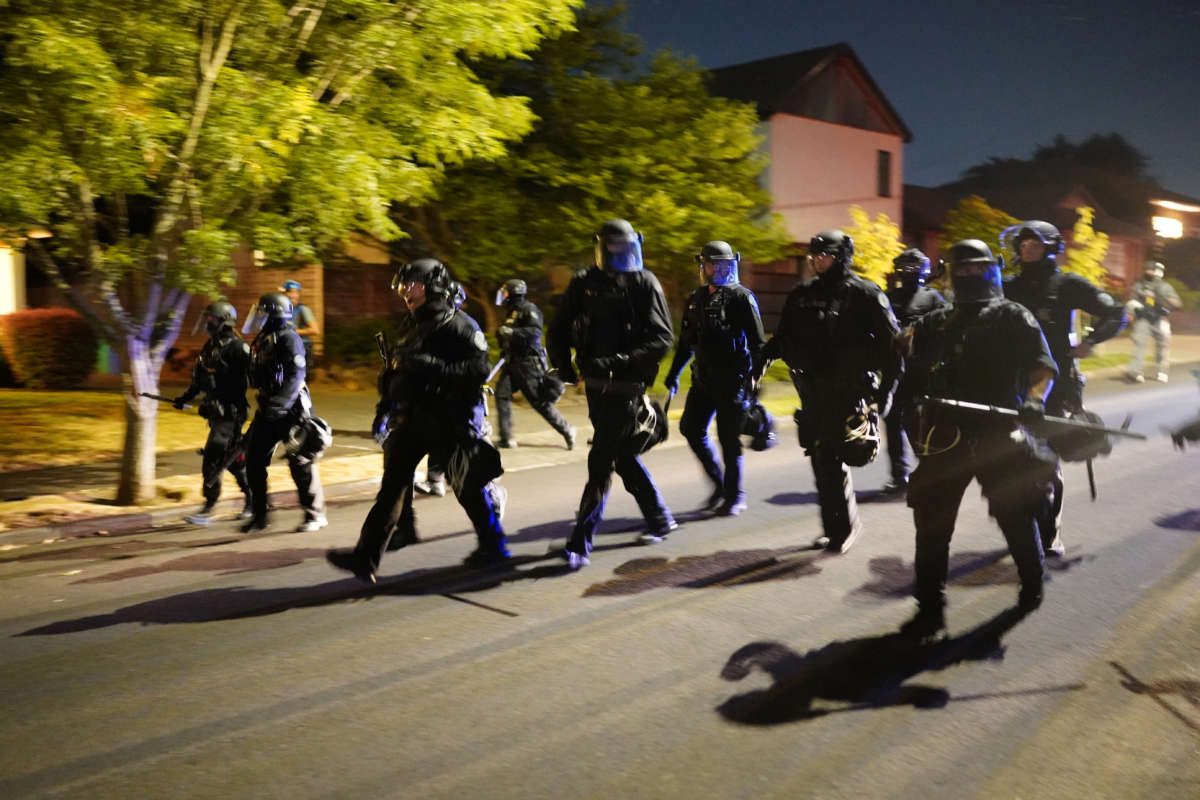
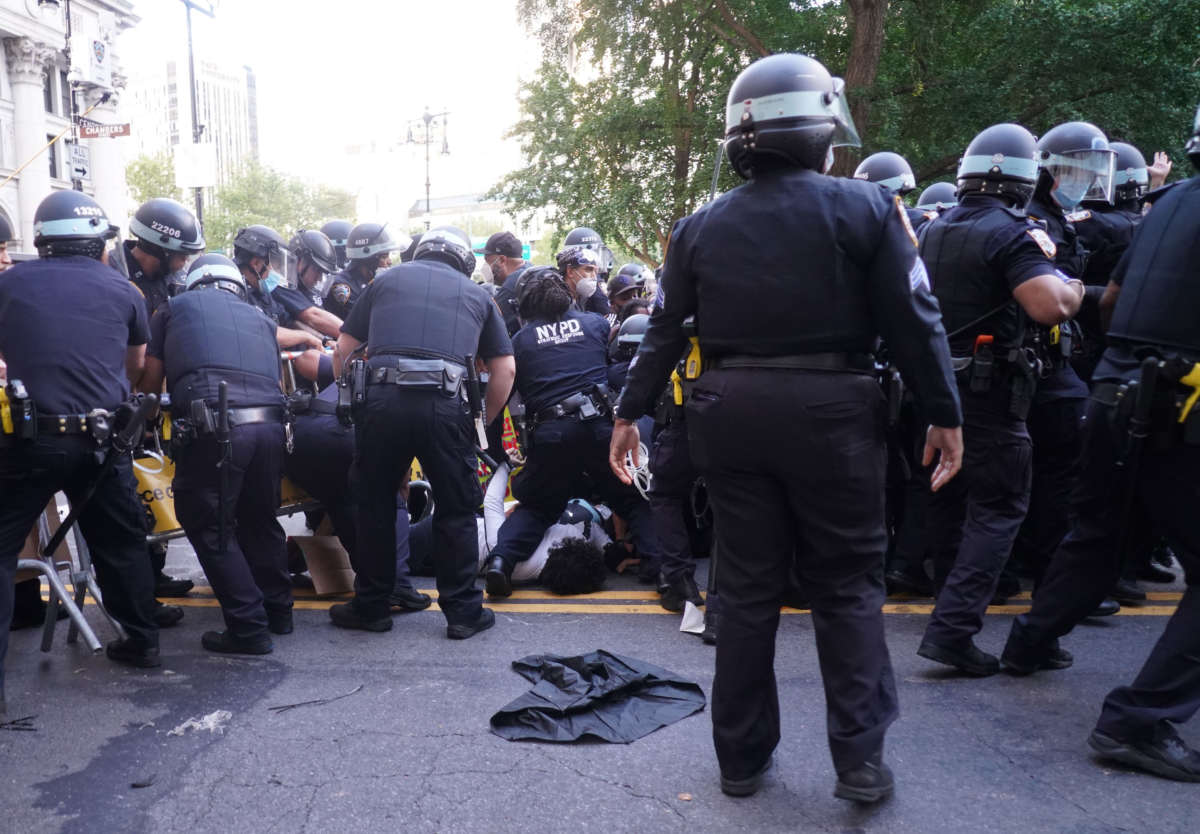

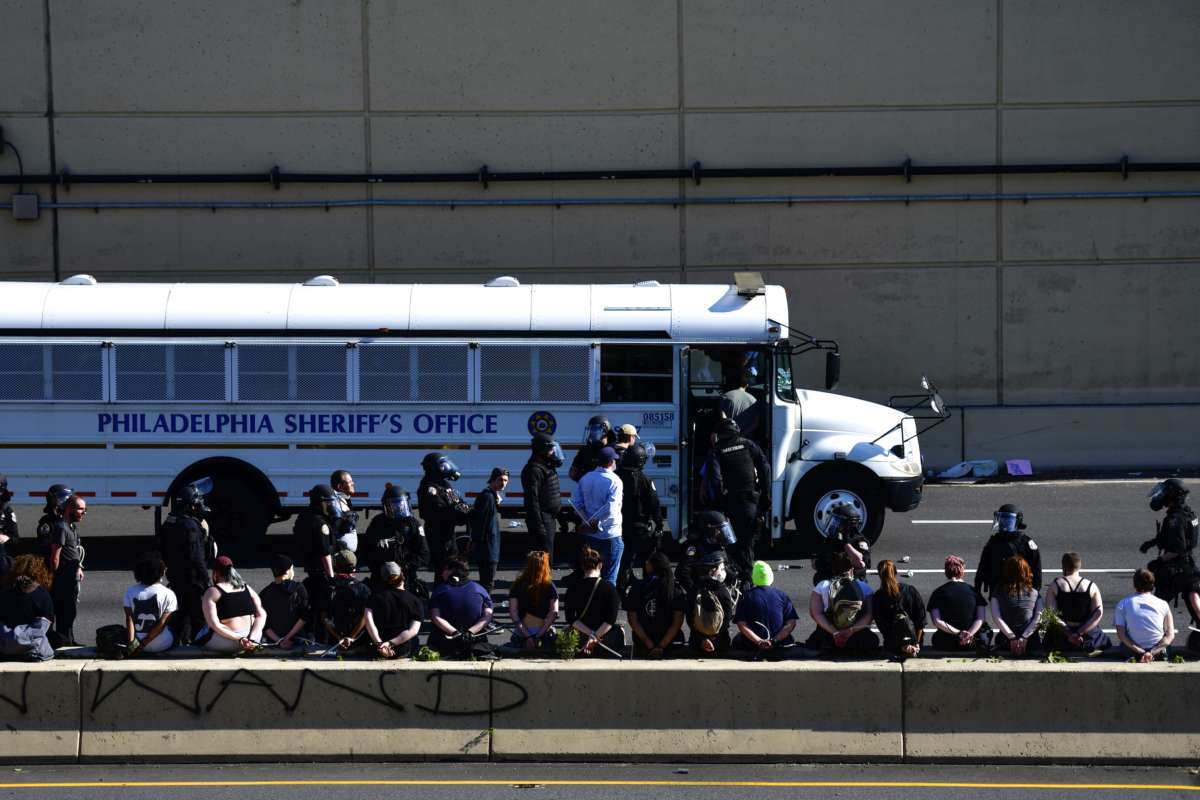

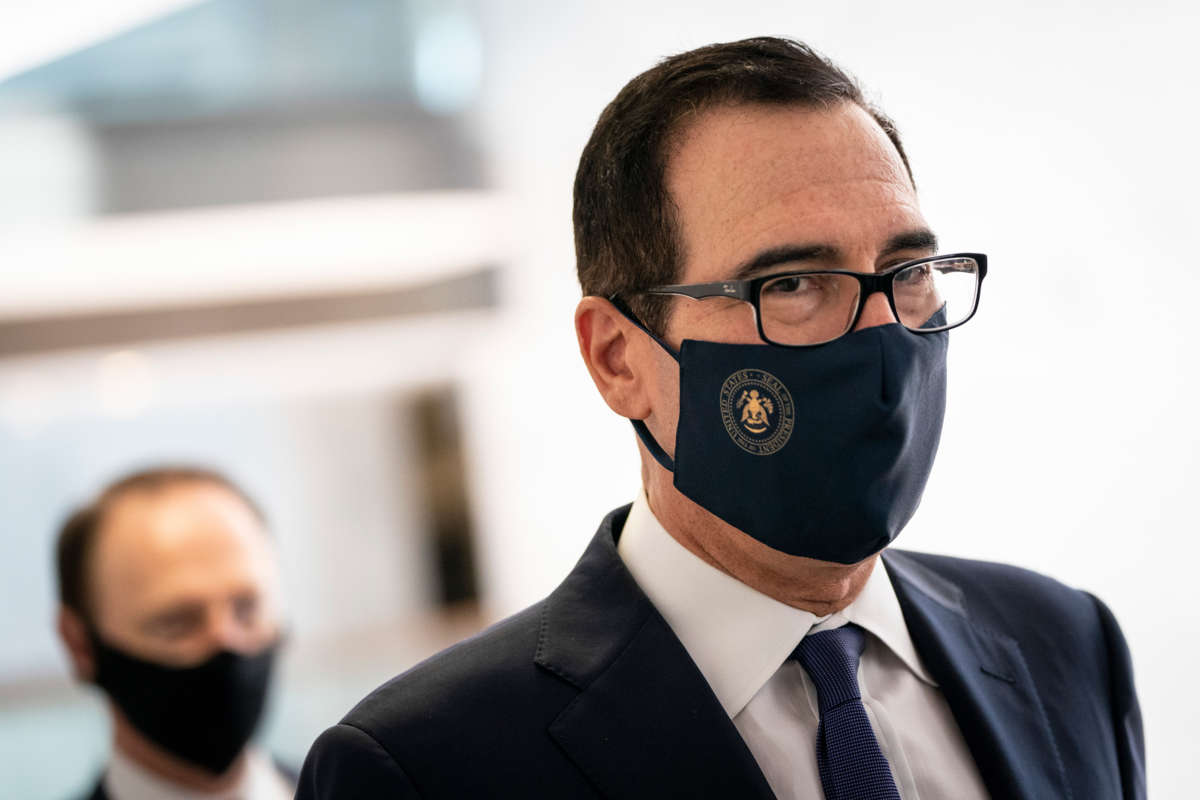 U.S. Treasury Secretary Steven Mnuchin walks with his security detail as he arrives at the Senate Republican policy luncheon in the Hart Senate Office Building on Capitol Hill on July 28, 2020, in Washington, D.C.DREW ANGERER / GETTY IMAGES
U.S. Treasury Secretary Steven Mnuchin walks with his security detail as he arrives at the Senate Republican policy luncheon in the Hart Senate Office Building on Capitol Hill on July 28, 2020, in Washington, D.C.DREW ANGERER / GETTY IMAGES